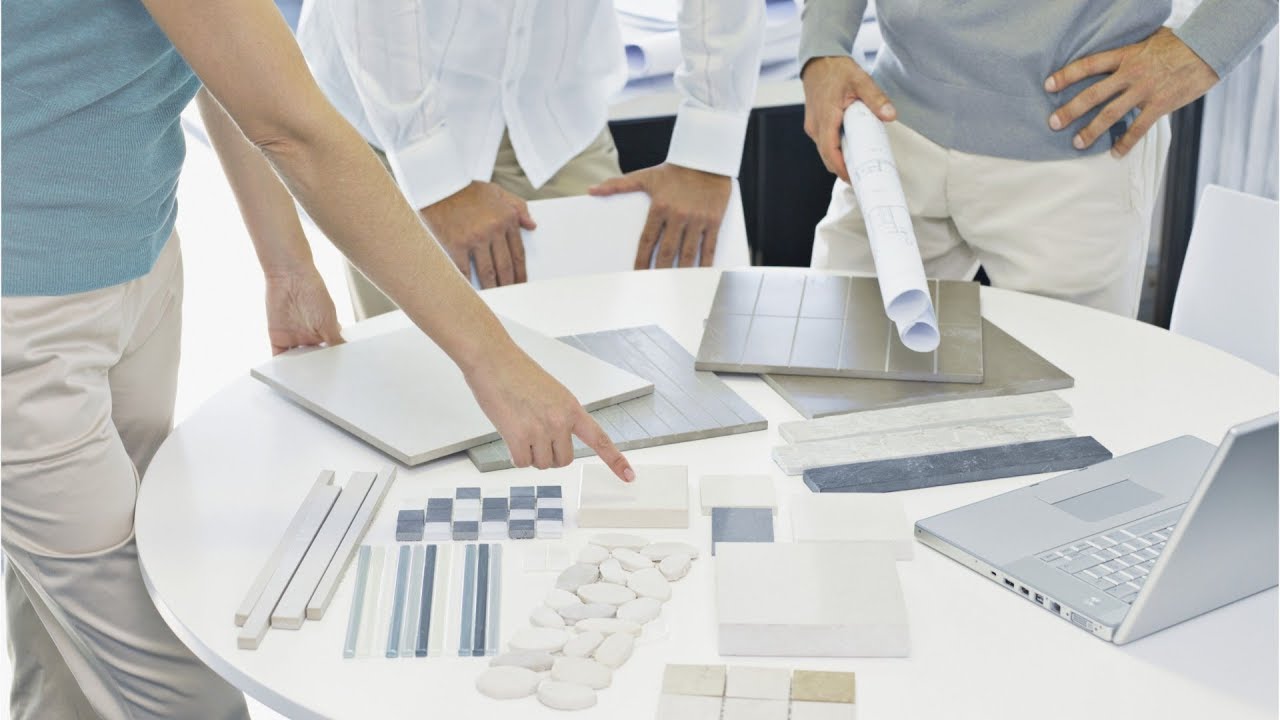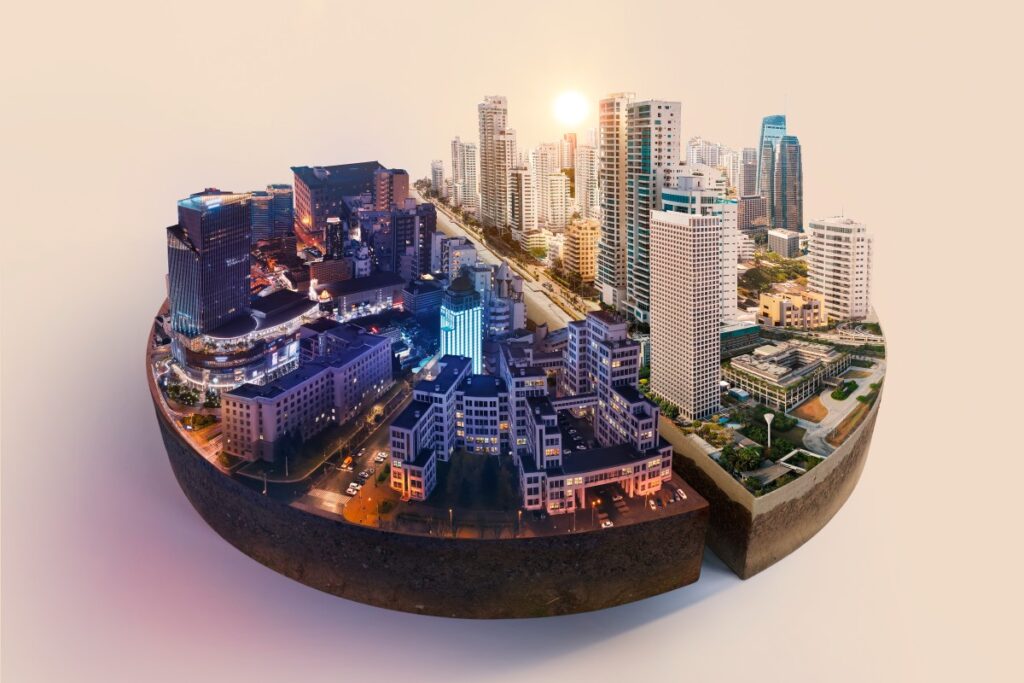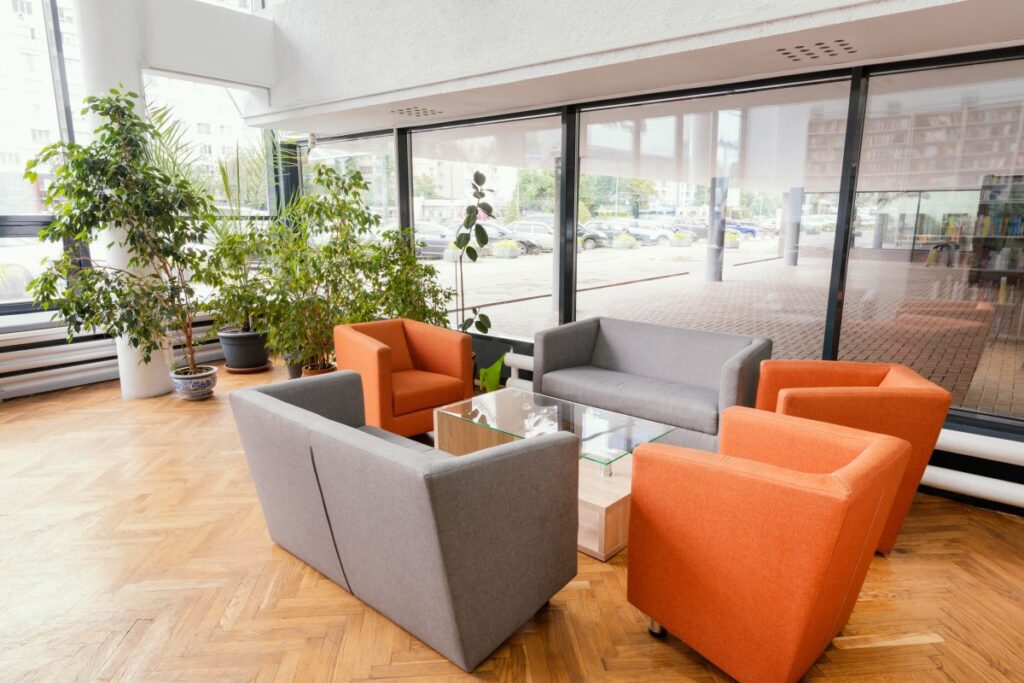Skyscraper design has evolved over time, showcasing human innovation and our unwavering desire to reach new heights, both literally and metaphorically. Architects continuously push boundaries, incorporating cutting-edge technology, sustainable practices, and artistic beauty into their creations. In this blog, we will delve into the fascinating world of architectural innovations in skyscraper design, exploring how technology has been effectively utilized to construct structures that inspire awe. We will also highlight the crucial roles architects and interior designers play in this constantly evolving field by shining a spotlight on professionals based in Pune who make significant contributions.
Advancements in Structural Engineering
A pivotal element of skyscraper design encompasses the structural engineering that sustains these colossal entities. Throughout time, architects and engineers have effectively utilized cutting-edge technology to devise inventive structural systems that optimize the stability, security, and aesthetic allure of skyscrapers.
Architectural innovations in skyscraper design transcend mere height, encompassing intricate engineering endeavors that demand meticulous planning and flawless execution. The establishment of these awe-inspiring architectural wonders owes much to advancements in structural engineering. By incorporating cutting-edge materials and embracing innovative design principles, architects can defy conventional boundaries, attaining unprecedented heights, distinctive shapes, and heightened sustainability.
The incorporation of advanced elements such as ultra-high-performance concrete and carbon fiber composites has facilitated the construction of remarkably slender and taller skyscrapers. These advanced materials offer the requisite robustness and longevity essential to sustain the immense weights of towering structures, all the while permitting imaginative and captivating technology in architecture design. The use of cutting-edge architectural analysis tools and modeling software has proven vital in ensuring the strength and safety of these massive structures.
Sustainable skyscraper design
Sustainability holds a pivotal role in contemporary architectural practices, encompassing architectural innovations in skyscraper design as well. With our cities witnessing constant expansion, the ecological repercussions of these towering skyscrapers cannot evade attention. The incorporation of environment-friendly technologies and sustainable construction methodologies has notably shaped the development of high-rise buildings.
Architects have successfully diminished the environmental consequences associated with towering structures by integrating elements like energy-efficient glass exteriors, solar panels, systems for rainwater collection, and wind turbines. These advancements not only conserve energy but also enhance the enduring cost-effectiveness of these towers.
An important development in sustainable skyscraper design involves the integration of green roofs and walls. These innovative features incorporate vegetation into the architectural design, not only enhancing the urban landscape with natural beauty but also providing a multitude of environmental advantages.
Sky bridges and vertical connectivity
Modern skyscrapers have evolved to become vibrant, interconnected communities elevated in the sky. These technological marvels in architecture design incorporate brilliant innovations called sky bridges or skywalks, enabling inhabitants to seamlessly transition between buildings at different elevations. Not only do these bridges facilitate convenient movement, but they also serve as shared areas, seamlessly connecting residential, commercial, and recreational zones.
The utilization of sky bridges elevates both the practicality and visual appeal of tall buildings, enriching the experiences of individuals residing in or visiting them by offering awe-inspiring panoramas and distinctive spatial encounters. These pedestrian links not only serve as convenient conduits within a structure but also foster social engagement and dynamic urban settings. Moreover, these passageways can accommodate diverse amenities such as retail stores, eateries, and even recreational spaces, transforming them into more than mere walkways.
By collaborating with the best interior designers in Pune, they prioritize the dual aspects of functionality and aesthetic appeal, ensuring that these skywalks not only serve their purpose but also enhance the overall experience of the building.
Vertical gardens and greenery
As cities continue to grow, integrating nature into architectural innovations in skyscraper design has become essential. Vertical gardens, also known as living walls, offer an innovative solution to urban greening. These lush vertical landscapes not only enhance the visual beauty of skyscrapers but also improve air quality and provide natural insulation benefits.
Vertical gardens exemplify biophilic design, highlighting the inherent link between people and nature. Incorporating botanical elements into the architecture of skyscrapers demonstrates a progressively stronger dedication to this principle. Furthermore, these vertical gardens serve as evidence of the innovative application of technology in architectural design to enhance urban surroundings.
Adaptive Facades
The exterior of a structure can be considered its outer layer, comparable to the function of skin on a human body. Present-day skyscrapers are equipped with adaptable facades that respond to surrounding environmental factors. These dynamic surfaces are capable of modifying their properties to enhance lighting, temperature regulation, and visibility, thereby exhibiting high levels of energy efficiency.
Adaptive facades demonstrate the harmonious blend of technology and architecture, utilizing sensors, smart materials, and automation systems. These avant-garde structures possess the capability to dynamically respond to changing weather conditions in real-time. When faced with blazing sunlight, the facade skillfully adapts to minimize direct exposure and heat absorption, reducing the need for excessive air conditioning. Conversely, on chilly days, it maximizes natural light penetration while minimizing heating costs.
By integrating advanced materials like electrochromic glass and intelligent shading systems, skyscrapers can ensure both comfort and reduce energy consumption. This not only makes these buildings more sustainable but also provides cost-effective benefits for their occupants.
Resilience and disaster preparedness
In today’s age, characterized by a surge in climate-related calamities, it has become imperative to construct skyscrapers that can effectively confront diverse environmental adversities. Architects in Pune and engineers are dedicating their efforts toward resilience and disaster readiness, meticulously crafting these towering edifices to endure earthquakes, hurricanes, and other natural catastrophes.
Architectural innovations in skyscraper design in present times are fitted with cutting-edge structural systems like base isolators and tuned mass dampers. These systems effectively absorb and disperse seismic forces. Furthermore, building materials are continually progressing and adapting to enhance their resilience. These advancements hold immense significance in protecting lives and investments, particularly in densely populated urban regions.
Challenges and Future Prospects
There are still issues that need to be resolved despite major developments in architectural innovations in skyscraper design. These include complying with zoning regulations, acquiring sufficient land, and assessing economic viability, which can all present significant obstacles. Furthermore, the cost and logistical complexity of maintaining and providing services for skyscrapers can be quite substantial.
Despite the current advances, there is still immense potential for further progress in the years ahead. The utilization of 3D printing in constructing towering buildings has the power to revolutionize the entire industry, bringing about faster and more cost-effective processes.
Also check out: Top Interior Design Trends in 2023
Conclusion
Architectural advancements in skyscraper design intersect the realms of art, technology, and sustainability. Professionals in the architectural industry, such as the team at OglingInches in Pune, have played a crucial role in driving progress in this dynamic field. From cutting-edge structural engineering to sustainable methodologies, skyscrapers continuously redefine the horizons of our cities while prioritizing environmental preservation. These towering marvels transcend being mere structures; they symbolize human inventiveness and our unwavering pursuit of reaching greater heights, both literally and metaphorically. As technology advances and architects and interior designers push the boundaries of possibility, the future of skyscraper design holds the potential for even more astonishing and sustainable feats, contributing to a greener and more interconnected urban world.




